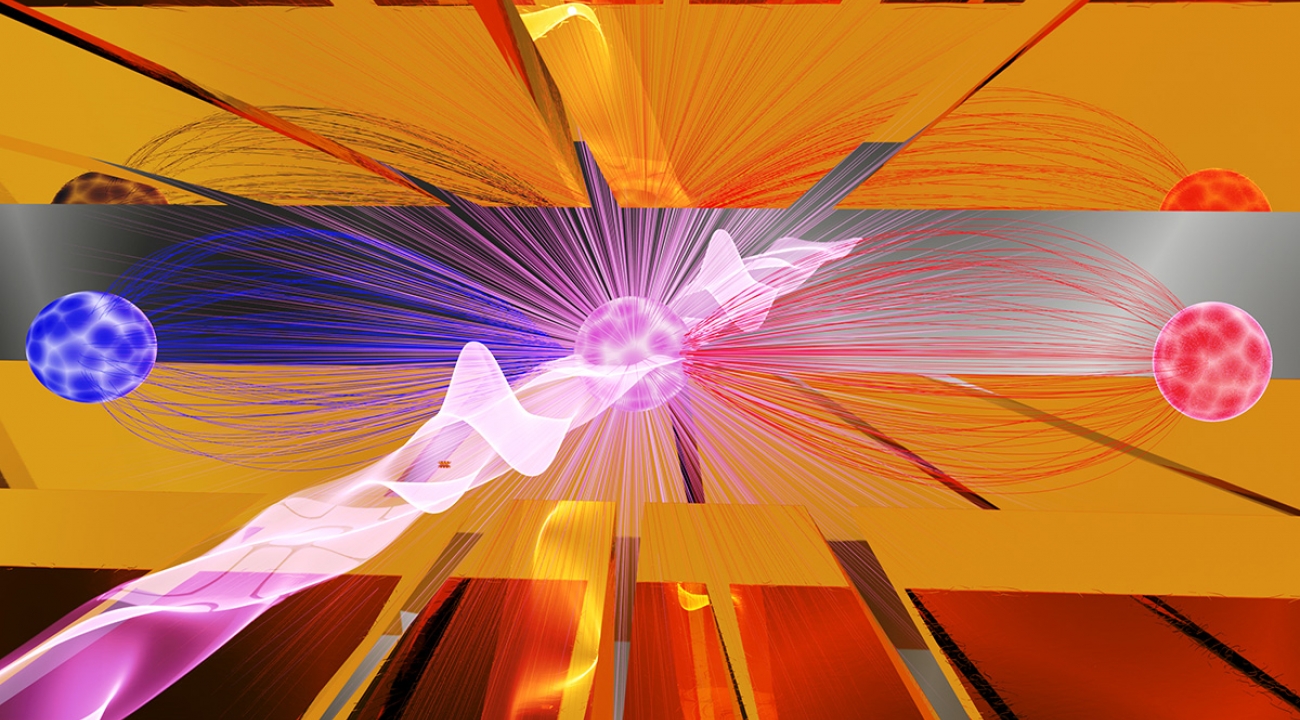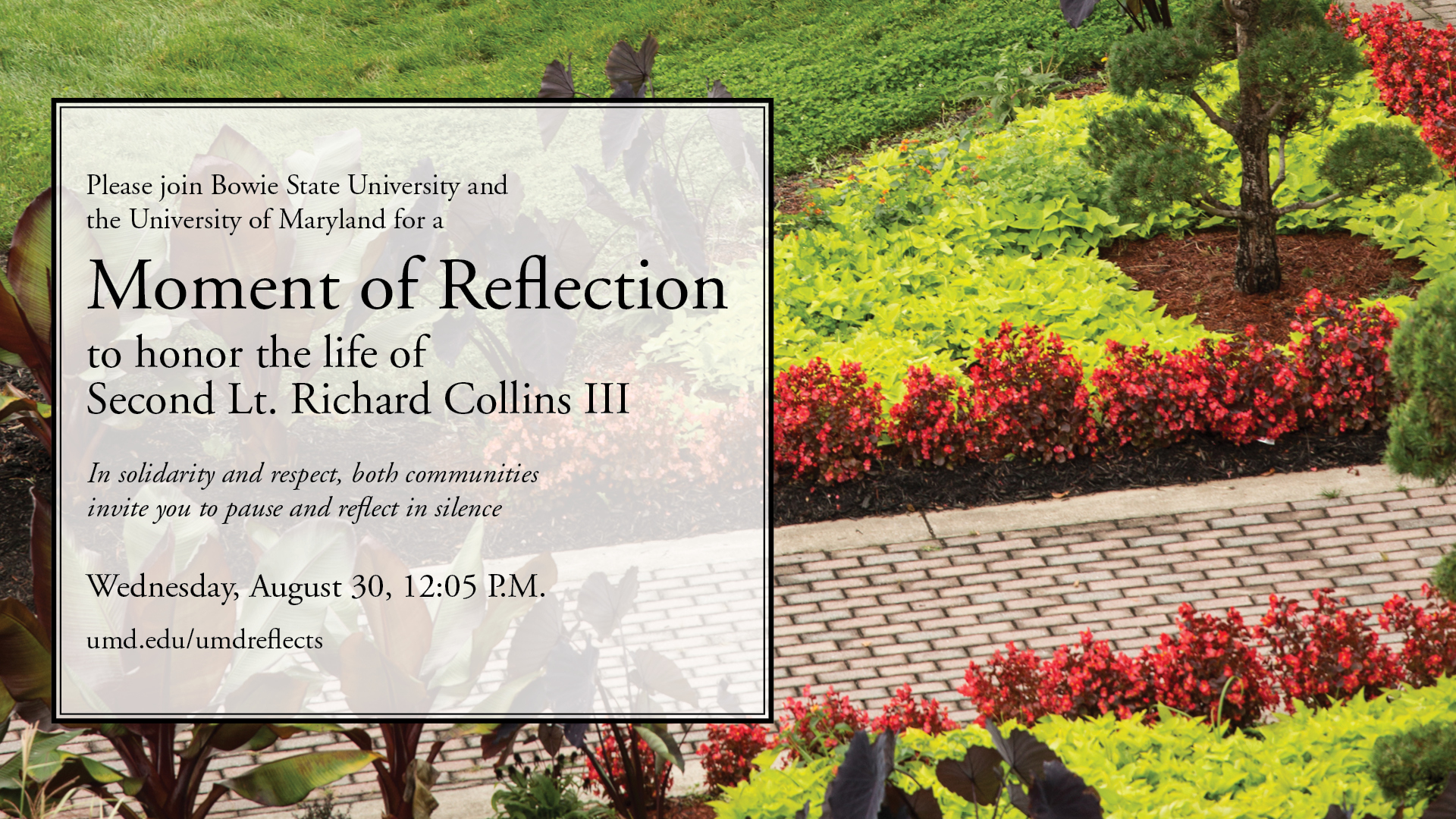Turning Ions into Quantum Cats
- Details
- Category: Research News
- Published: Monday, October 02 2017 03:30
In Schrödinger's famous thought experiment, a cat seems to be both dead and alive—an idea that strains credulity. These days, cats still don't act this way, but physicists now regularly create analogues of Schrödinger's cat in the lab by smearing the microscopic quantum world over longer and longer distances.
 An ion (purple) sits in the center of an ion trap. Ultrafast laser pulses create a "cat state" by pushing apart the ion's internal quantum states (red and blue). (Credit: E. Edwards/JQI)
An ion (purple) sits in the center of an ion trap. Ultrafast laser pulses create a "cat state" by pushing apart the ion's internal quantum states (red and blue). (Credit: E. Edwards/JQI)
